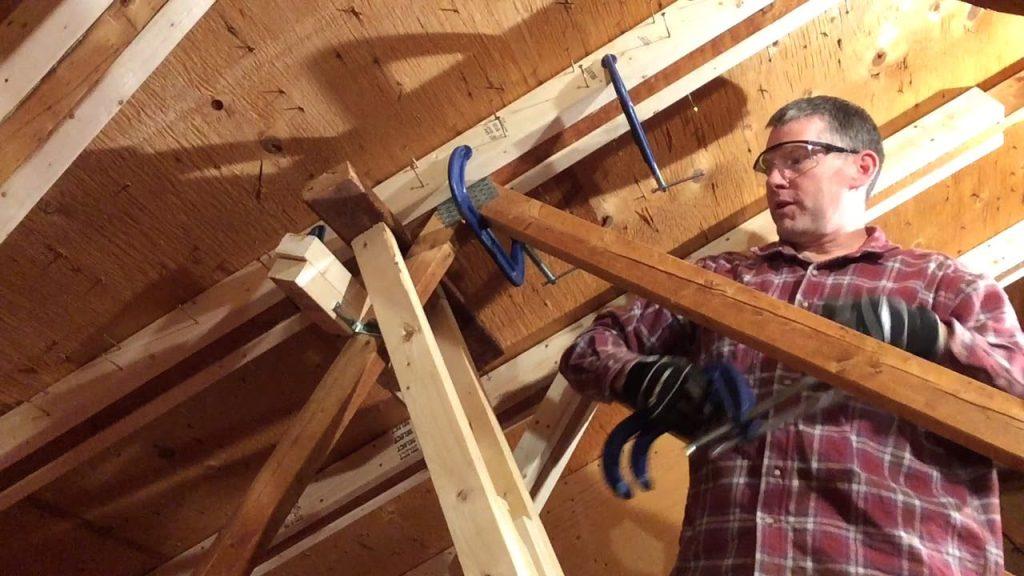When it comes to the structural stability of your home, the roof truss system plays a critical role. Roof trusses are essential components that support the entire weight of your roof, ensuring it can withstand various loads such as heavy snow, wind, and rain. Over time, though, roof trusses may require repairs to maintain their integrity and functionality. In this article, we will explore the key details of roof truss repair, including common issues, repair methods, and the importance of professional assessment.

Common Issues with Roof Trusses
Before delving into repair methods, it’s crucial to understand the common issues that can affect roof trusses. Identifying these issues early can help prevent more extensive damage and costly repairs down the road.
1. Moisture Damage
Moisture is one of the primary culprits behind roof truss problems. Leaky roofs, high humidity levels in attics, and poor ventilation can lead to moisture accumulation. Over time, this can cause the wooden components of the truss to weaken, rot, or develop mold.
2. Pests and Insects
Wooden roof trusses are susceptible to damage from pests and insects like termites. These critters can tunnel through the wood, compromising its structural integrity. Signs of infestation include small holes, piles of sawdust-like material, or audible clicking sounds from within the wood.
3. Overloading
Roof trusses are designed to bear specific loads. If excessive weight is placed on the roof, either from snow accumulation or structural modifications, it can lead to sagging or even structural failure.
4. Age and Wear
As with any structural component, roof trusses have a finite lifespan. Over the years, exposure to the elements and natural wear and tear can cause them to weaken.
Roof Truss Repair Methods
Repairing roof trusses requires a thorough assessment of the damage and an understanding of the appropriate repair methods. Here are some common approaches to addressing roof truss issues:
1. Reinforcement
For trusses with minor damage or signs of weakening, reinforcement is often the most effective solution. This can involve adding additional framing members or braces to strengthen the truss.
2. Sistering
In cases of localized damage, sistering involves attaching a new, identical truss member to the damaged one. This method effectively “sisters” a new truss alongside the old one, providing added support.
3. Replacing Damaged Components
When individual truss components, such as chords or webs, are severely damaged, they may need to be replaced. This is a delicate process that requires careful measurement and alignment to ensure the truss’s structural integrity.
4. Professional Assessment
For any roof truss repair, it’s essential to consult with a structural engineer or a professional roofing contractor. They can assess the extent of the damage, determine the best repair method, and ensure that the repaired truss complies with local building codes and standards.
The Importance of Professional Assessment
While some minor roof truss repairs may seem like DIY projects, it’s crucial to involve professionals, especially for significant repairs or when the structural integrity of your home is at stake. Here’s why:
- Safety: Roof work is inherently dangerous, and professionals are trained to handle it safely.
- Code Compliance: Roof truss repairs must meet local building codes and regulations. These requirements are well-understood by professionals.
- Structural Integrity: A professional assessment ensures that the repair restores the truss to its original structural integrity, preventing future problems.
- Warranty: Professional repairs often come with warranties, providing peace of mind that the work is guaranteed.
In Conclusion
Maintaining the structural integrity of your roof trusses is essential for the overall safety and longevity of your home. Addressing roof truss issues promptly and professionally can prevent further damage and costly repairs in the future. If you suspect any problems with your roof trusses, don’t hesitate to seek the expertise of a qualified roofing contractor or structural engineer to assess the situation and recommend the appropriate repair methods. Remember, a sound roof truss system is a crucial component of a secure and durable home.



Leave a Reply